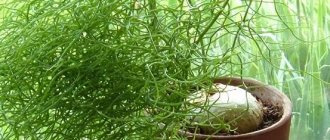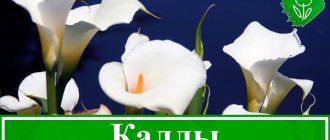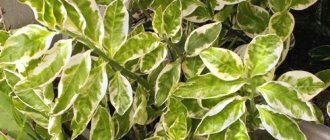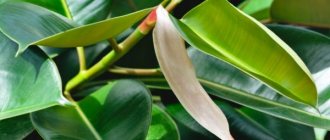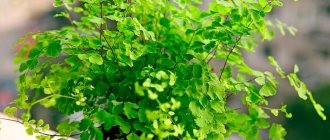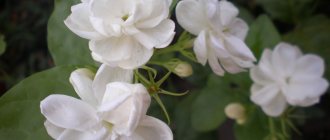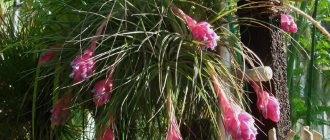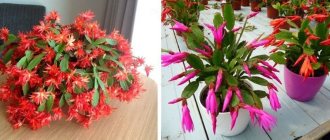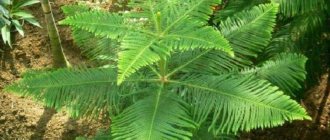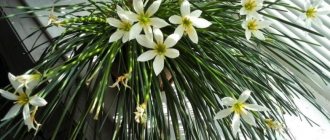The Nepenthes plant, also called the pitcher plant, is the only genus of the monotypic family Nepentheaceae. The name of this unusual plant was derived from the word “nepenthe”, which was the name of the herb of oblivion in ancient Greek mythology.
Nepenthes is most widely distributed under natural conditions in the tropical part of Asia, and more precisely, on the island of Kalimantan. The eastern border of the range of this plant reaches New Guinea, New Caledonia and Northern Australia, and the western border - to the Seychelles and Madagascar. Nepenthes is a carnivorous plant that “eats” various insects. He has strong symbiotic bonds with some of the animals. For example, mountain tupai use large species of such plants as dry closets: this small animal leaves its droppings in jugs while eating Nepenthes nectar. This droppings are used by the flower as fertilizer. Jugs are used by bats as a place to sleep, where they are not bothered by annoying insects, and they do not have to fight with their relatives for such a sleeping place. For this, the plant receives the nitrogen it needs from the excrement left by the mice.
Let's get to know each other better
Nepenthes is a plant of the genus belonging to the monotypic family Nepenthaceae. It includes more than 100 species of predator plants and their natural hybrids. The name comes from the word "nepenthe", which in ancient Greek mythology meant "herb of oblivion". People call Nepenthes more simply - Pitcher or Flycatcher.
Nepenthes in the wild (photo by Stewart McPherson)
In the wild, the pitcher plant grows in the forests of tropical Asia and on the islands of the Pacific basin. The flower is most often found on the island of Kalimantan, the Seychelles and Madagascar, New Caledonia and Northern Australia. Moreover, some species of these predatory plants lurk on the green plains, others settled high in the mountains, and others like peat bogs and wetlands. Many species of Nepenthes live in trees. With their long grassy stems, they climb branches and trunks to unprecedented heights in search of sunlight for their inflorescences. It happens that plants lose their connection with the earth, not receiving any nutrients from their neighbors, that is, they are essentially epiphytes. This is where they are simply forced to eat insects in order to survive.
The plant has strong symbiotic relationships with some representatives of the animal world. For example, mountain tupai use Nepenthes with large trap jugs as dry toilets. They feast on the nectar of the plant and leave their droppings in the jugs, which the plant then digests and absorbs as nitrogen fertilizer. Bats often climb into large jugs to sleep, where they are not bothered by the heat and insects. They also leave their excrement, which contains the nitrogen necessary for the plant, in the trap.
Description and appearance
This perennial plant is most often found in the form of herbaceous semi-shrub vines or as shrubby epiphytes. Thin, herbaceous stems become woody over time. If the plant settles next to tall trees, then its shoots can reach tens of meters in height. At home, the height of Nepenthes does not exceed one and a half meters, most often it is 60 - 90 cm. The leaves of the Pitcher plant are alternate, large, with a convex midrib and an elongated apex. They are elongated, bright green or yellow-green. The leaves reach 30 cm in length. In addition to ordinary leaves, others develop on the flower, which play the role of digestive organs in Nepenthes. In these leaves, the lower part of the petiole, connecting to the stem, is wide and flat. The tip of the leaf turns into a thin tendril that wraps around the branch.
At the end of the tendril a jug appears, looking like an extraordinary flower. This is an insect trap. It ranges from 3 to 30 cm in length, but there are also Nepenthes with huge jugs - up to half a meter in length. The traps have lids to protect the inside of the jug from rainwater and any debris.
There are also such specimens of Nepenthes
Depending on the type of plant, the jugs have different colors, but they are always bright and attractive: matte white, red, orange, yellow, light green, with stripes and spots. The upper edge of the jug is curved inward and covered with pink or purple grooves. It looks like a thick brush due to the small, stiff bristles located along it. Sweet nectar is produced there. The inner walls of the trap are smooth. The jug is 1/3 filled with a special viscous digestive liquid that contains the enzyme nepenthesin. This liquid resembles human gastric juice. Attracted by the aroma of Nepenthes nectar, insects fly or crawl under the lid of the trap, slide into the digestive fluid and drown in it. After 5 - 8 hours, nothing remains of them - only a chitinous shell. Occasionally, even small birds, frogs and rodents end up in large jugs. Thus, the plant receives all the micro- and macroelements it needs for its life.
Of course, the carnivorous plant Nepenthes does not rely only on this method of nutrition. Its roots absorb moisture from the soil. Its green leaves receive nutrition through the process of photosynthesis. Therefore, in case of a shortage of food of organic origin, the Pitcher plant feeds in the classical way like an ordinary plant.
Mukholov grows like a bud. As it grows, it swells from the inside and stretches out. When it reaches a certain age, it becomes like a narrow, thin-walled jug or glass, and a lid with a lever opens in its upper part. The neck of the jug, the peristome, can be smooth or corrugated, similar to a wide collar or a jagged comb. Some species of Nepenthes have a distinctive feature - on the outside of the pitcher there are jagged wings from the base to the upper edge, which serve as support and as guides for crawling insects, luring them into a trap.
Each pitcher stays on the plant for quite a long time, from 2 to 4 months, and the flowering of the entire plant can last up to 8 months. Before the onset of winter, the pitchers dry out and fall off. The plant seems to be resting - it eats and drinks less and stops growing. With the arrival of spring, it comes to life again, and the jugs grow back.
Nepenthes inflorescences
In addition to the original pitchers, which many mistake for flowers, Nepenthes periodically forms true racemose or paniculate apical inflorescences. Small petalless flowers with three to four imbricated sepals, collected in reddish-brown erect inflorescences, bloom in the axils of the leaves. They bloom for quite a long time - sometimes up to six months. They cannot be called spectacular, but their unusualness attracts. After flowering, fruits are formed - leathery boxes with green partitions inside. In each chamber, rows of small cylindrical seeds ripen.
It should be remembered that Nepenthes is a dioecious plant. On some plants, only male flowers bloom, while on others, only female flowers. In the wild, pollination occurs by billions of insects; seeds are not a problem. At home, flowering occurs quite rarely. And in your collection, both Nepenthes specimens should bloom at the same time - both male and female. In addition to everything, you also need insects - pollinators, which you certainly will not tolerate in your home. So getting a ripe Nepenthes fruit at home, and even your own seeds, is a big problem.
Despite the carnivorous nature of Nepenthes, it is not poisonous!
Lifespan
In gardeners' reference books you can read that at home, the Pitcher plant will not live for more than a year and a half. But many flower growers claim that with proper care, it can live much longer. There were specimens that lived for more than three years.
This may be interesting: Venus flytrap (Dionea) - home care
Using an individual approach to growing this tropical predator, investing your attention and care into this difficult task, perhaps you will be able to tame it, and your Nepenthes will be the first indoor insectivorous flower - a long-liver.
What is it: general description
The southeast Asian tropics are considered to be the plant's homeland. Nepenthes is also found in the Seychelles and Philippine Islands. It also grows in Australia, Madagascar, Thailand and Singapore.
At home, Nepenthes can grow up
to 60 cm , while “in the wild” it can grow up to 20 meters .
Nepenthes may look like a shrubby or semi-shrubby vine. The stems are thin and herbaceous with slight woodiness. The leaves are large, with a pronounced midrib and an elongated apex.
The key feature of Nepenthes is the jugs made of leaves , over which there is a lid. In the lower part there are special glands that secrete nectar to attract insects edible for Nepenthes.
They sit on the upper smooth part of the jug and slide inside, getting into the digestive juice. By feeding in this way, the plant receives a lot of nutrients.
The seeds are stored in a leathery box, divided into chambers by internal partitions. The seeds themselves are small with a straight, cylindrical embryo.
Types and varieties
Winged (Alata)
Nepenthes alata (Nepenthes alata) is native to the Philippines. There it grows in length from one to four meters. The leaves are dark green, lanceolate. Traps in the shape of narrow jugs have a bright light green color with red specks. This species is most often grown by exotic lovers in their apartments. He does not have a very capricious character, he tolerates the humidity of home premises. It is grown as a shrubby vine no more than 90 cm in height. The jugs are quite large in size and have spectacular colors, but the flowers are very small and inconspicuous.
Kuvshinchikovy
Nepenthes Pitcher loves a swampy climate. Its pitchers are grouped into nests. Not demanding on maintenance, suitable for home growing.
Madagascar
Nepenthes madagascariensis grows on the island of Madagascar. A rather branched evergreen bush up to a meter in height. The leaves are elongated and bright green. Bright crimson pitchers of impressive size hang on thin flagella under a lush crown - up to 25 cm long. Loves moisture and high temperatures. This plant is usually grown in greenhouses.
Rafflesiana
Nepenthes rafflesiana has long vines with large elongated leaves on short petioles. The leaves reach 50 cm in length and up to 10 cm in width. The jugs are usually small in size, from 10 to 20 cm in length and up to 10 cm in width. On the outside they are light green in color with red spots and stripes, and on the inside they are bluish in color.
Hairy (Villosa)
Hairy Nepenthes (Nepenthes villosa) has pitchers measuring 20 cm in length, greenish-red in color with a raised, bright green rim.
Truncata
Nepenthes truncata is common in the Philippines. Under the large leathery leaves with blunt ends there are huge jugs, up to 50 cm in length. They are colored brown-green.
The largest species of Nepenthes is Raja
Nepenthes Rajah is the largest plant species, a real mountain giant. It grows in mountain glades in northern Borneo at an altitude of over two km. The shoots of the creeping vine reach a length of 6 meters. Large petiolate leaves with long tendrils are located on the stems at equal distances. Purple or burgundy jugs are more than 50 cm in length and hold more than one liter of digestive fluid, which is quite enough to digest not only insects, but also larger “game”: frogs, lizards, rats. Grows only in the wild.
Attenborough
Nepenthes Attenborough , a spreading shrub up to one and a half meters high, is distinguished by its particular bloodthirstiness and large capacity of jugs - up to one and a half to two liters. The length of the trap is 25 cm and the width is 12 cm. Capable of digesting large “game”: rat, lizard. The color of the jug is green with brown specks.
Double spur (bicalcarata)
Nepenthes bicalcarata is found in both highlands and swampy areas. The leaves are large, reaching 60 cm in length, but the jugs are very small - up to 10 cm.
Pervilla (pervillei)
Nepenthes pervillei are mainly found in the Seychelles. It has jugs of the widest diameter, which are painted in a rich red color.
Hookeriana
Nepenthes Hookeriana loves high humidity and temperature. Its jugs have the color of unripe eggplant. Grown in terrariums.
Bloody Mary
Nepenthes Bloody Mary has bright, burgundy-colored, large jugs. Loves sunlight very much. Less predatory than its brothers - flycatchers. For him, insects are not an obligatory delicacy; he can be content with the classic way of eating. If you provide this type of Nepenthes with sufficient year-round lighting, it can be grown at home.
Caring for Nepenthes at home
In indoor floriculture, Mukholov is not yet common, since almost all of its species are very demanding in terms of maintenance and are too large even for small greenhouses. But it is still popular among exotic lovers: the presence of an original insectivorous plant in the home collection attracts many. At home, mainly dwarf hybrids of Pitcher plant are grown, obtained from shrubby epiphytes with small pitchers. What is proper care for Nepenthes at home? Let's figure it out in order.
Flower locations
If you simply place a pot of Nepenthes on the windowsill, then no matter how hard you try, it will not turn out to be a jug. Most likely, you will have an exotic bush growing vigorously with abundant foliage. In order for hanging jugs - traps - to appear on the plant, you need to create special conditions for it. Windows facing southwest or southeast are best suited. On the north side, the flower will not grow well without additional powerful lighting, but on the south side it will have to be shaded from direct sunlight. We do not recommend turning the pot towards the light in different directions. Knowledgeable flower growers even mark the side of the flowerpot facing the light with a mark and make sure that the pot is not turned to the sun on the other side. Otherwise, the Pitcher will stop creating new pitchers and stop growing. If you still had to move the pot, then at least two months will pass until Nepenthes gets used to the new location and begins to develop again.
The flower does not tolerate drafts, but loves fresh air - keep this in mind when ventilating the room. Nepenthes shoots that grow over time should be tied to supports. We recommend installing them immediately when replanting a one-year-old plant for the first time.
Humidity
Some types of Nepenthes grow and develop normally at normal home humidity levels of 50 - 60%. When purchasing your pet, ask about its preferences. But a larger number of Nepenthes need very high air humidity, about 80% or more. Then it is necessary to use all available methods of increasing the humidity in the room with the flower. Humidifiers can be installed. You can place the pot in an open aquarium. You can place the pot in a tray with wet expanded clay at the bottom. You can place wide containers of water around the flower to evaporate moisture. If you have a bathroom with a window, then the Jug Jar can be placed on a bright window sill in the bathroom. There you can wet the ceramic tiles on the walls and floor; the evaporation of moisture will noticeably increase the humidity surrounding the flower.
This may be interesting: Sundew: description of plant species and varieties
Spraying
It is necessary to spray the plant and the air around it daily from a small spray bottle with distilled water at room temperature. Do not be afraid that droplets of water will fall into the jugs - they will not cause any harm to the plant. In their natural habitat, tropical raindrops do not dilute the liquid inside the jugs and do not impair its digestive value. This is, firstly. Secondly, insects are not the only source of nutrition for indoor Nepenthes. Thirdly, some gardeners even recommend adding a little distilled water to the jugs so that they are 2/3 full of volume. This will protect the jugs from becoming lethargic and drying out.
It is much easier to maintain comfortable conditions for the long-term residence of this flower in special florariums and terrariums. If you have the opportunity to purchase them, purchase them.
Lighting
Nepenthes loves saturated diffused light for 14 - 16 hours a day. To ensure such a long daylight hours, especially in autumn and winter, powerful phyto lamps will be required. If the pot is on a windowsill, then let it be a southwest or southeast window with mandatory lighting from autumn to spring. If the flower does not have enough lighting, it may stop forming jugs, and existing ones may dry out. If this happens in winter, it’s okay. With the arrival of spring, the situation usually returns to normal.
Temperature
Nepenthes does not tolerate low temperatures. The optimal temperature for it is between 22 and 28 degrees. in high light and humidity conditions. It's summer. In autumn and winter, the temperature can be reduced somewhat, but not lower than 18 - 20 degrees. For some time, the flower can survive at low temperatures, up to 16 degrees, but it will not survive a long drop - it will get sick and die. Too high, up to 35 grams, will also negatively affect the health of the flower. temperature.
It is important to familiarize yourself with the species characteristics of your specimen when purchasing it. If his parents grew up in lowlands and swampy areas, then your pet will feel comfortable in the summer at a temperature no higher than 26 degrees, and in the winter - 18-20 degrees. If your flower comes from rocky places, then in summer it will prefer a temperature no higher than 20 degrees, and in winter - about 15 degrees.
Watering
For irrigation, use rainwater or tap water that has been standing for 24 hours at room temperature or slightly higher. In the summer, water more often, once every two days, preferably in a tray. After some time, the excess water is drained from the pan - the water should not stagnate there. Nepenthes does not tolerate prolonged waterlogging. But it is not advisable to allow the soil to dry out. We recommend immersing the Nepenthes pot in a container with warm, settled water every two to three weeks until the soil is completely saturated (until air bubbles stop coming out). After this, let the water drain and put the plant in its original place. Water regularly and abundantly in the summer and moderately, once a week, in the autumn-winter period.
The soil
A mixture of peat, sand, pine bark, charcoal and sphagnum moss is suitable for Nepenthes. You cannot plant a flower in ordinary garden soil, black soil or clay. The substrate should be moderately fertile, loose, light and not sour. This plant is an epiphyte; it receives nutrition not so much from the soil, but from the air through the leaves and from organic substances that are obtained when it digests insects (flies, spiders, mosquitoes).
Ready-made soil can be purchased at the store - a soil mixture for orchids or epiphytes, plus sphagnum moss, is suitable.
Pot
Buy plastic pots, wide and not very deep, like bowls. Place a good layer of expanded clay or other drainage material at the bottom. After planting the plant, cover the surface of the soil with a layer of damp sphagnum moss or coconut fiber.
Nepenthes is designed in such a way that its jugs should hang vertically down, with their necks up. For this reason, the flower is often planted in hanging pots, or special supports and fastenings are arranged to create a hill for it.
Feeding
It is advisable to add one live medium-sized insect per month to at least a third of the jugs as natural feeding. The flower will gladly eat a fly, spider, ant, mosquito, grasshopper, maggot. For the meal to be successful, the jug must be at least 1/3 filled with digestive juice produced by the plant. You should not add other organic food, such as pieces of meat or fish, as there is a high probability that the jugs will rot from overfeeding with nitrogen.
From October to April, Nepenthes should not be fed; let it wait until spring.
If you have a problem with insects in your house, feed your predator with regular complex fertilizers for orchids or epiphytes every three weeks according to the instructions on the package, but in a dose reduced by three times. You should not pour fertilizer at the root. It is better to spray the plant with a spray bottle on the leaves. In principle, any complex fertilizers for indoor flowers that contain iron, copper, boron and chelatins are suitable.
Transplanting Nepenthes
A flower is replanted only when absolutely necessary - the old pot has become too small for the roots, or mold has appeared on the surface of the substrate, or Nepenthes has stopped developing and the reason is most likely rotting of the root system.
In any case, remove the plant from the old pot and inspect the roots. If they are damaged by rot, you will have to remove the affected ones and treat the healthy ones with fungicides. Plant the flower in the new potting mix. Water the transplanted plant with a solution of Topaz or Fundazol. After a couple of weeks, spray the treated plant with Zircon solution and water the soil in the pot with it.
If everything was in order with the roots, replant the plant with a lump of earth into new soil in a pot slightly wider and 10–15 cm deeper than the previous one. Don't forget about drainage at the bottom of the pot and a layer of sphagnum moss on the surface of the fresh substrate. After transplantation, Nepenthes should be under your close attention. Do not feed or feed it insects for a month. Carefully follow all watering, lighting and temperature standards. Spray it a couple of times with biogrowth stimulants. Now the flower can live in the new pot for another couple or three years.
Important! Digestive fluid with enzymes is formed in the jug only when it is formed. If for some reason this liquid spills out, then you will not be able to restore it, and there is no point in feeding an empty jug. To slightly prolong its life, you can pour a little distilled water into it. But still, this jug will dry out before the others.
If you bought Nepenthes in a store, do not rush to immediately transplant it into a new beautiful pot. It will live well for a long time in a transport pot until it needs a new pot due to the strong growth of the root system, since the flower perceives any intervention as aggression.
This may be interesting: Sundew - care at home
Nepenthes pruning
We recommend periodically cutting and pinching Nepenthes shoots. Then the flower will not stretch out much and will have an attractive compact appearance. In addition, pruning rejuvenates the bushes and stimulates them to form new buds and jugs. It is better to prune in the spring before the active growing season of the flower begins. The first pinching on the shoot is done after the sixth leaf has grown.
Winter dormancy period
In the autumn-winter period, indoor air humidity and ambient temperature usually decrease. At this time, it is convenient to organize a period of forced rest for Nepenthes. It is watered less and less often, it is no longer fed with fertilizers and insects, since it will spend a lot of energy digesting food. Do not be upset if the plant begins to lose its leaves and wonderful jugs - this is a natural process. With the onset of spring, you yourself will cut off almost all the leaves to the base, resume normal watering of the plant, raise the temperature in the room to 22 - 26 degrees, feed your pet, and the flower will again begin to grow leaves and form its own jugs.
Care
For those who think that when caring for this crop it is enough to walk over it with a “sprinkler” a couple of times a day, it is better not to get Nepenthes.
Watering
The flower requires a moist substrate, but overmoistening is contraindicated. Spraying is necessary only until the jugs appear - if water gets on them, they may rot.
In hot weather, a green pet should be refreshed once every two days, in cold weather - once a week.
Rain or melt water is ideal for irrigation. But tap water, filtered, settled or boiled will not work. TIP: use a simple method of moisturizing - place a container filled with water near the plant. The liquid will evaporate, and the air will become saturated with moisture.
Lighting, temperature
The temperature is selected taking into account where Nepenthes grows in its natural environment. For people from mountainous regions they need: in summer - 20 degrees, in winter - from 12 to 15. For those who come from swampy areas: in summer - up to 26 degrees, in winter - from 18 to 20, and in no case lower than 16- you.
The lighting needs to be bright, but diffused. If the pot is placed on a south window, you will have to do shading. On the north window you cannot do without artificial lighting.
CAUTION: drafts are harmful for a guest from the tropics, but the room must be ventilated regularly.
Transfer
If there is no need for a transplant - the pet looks good, has acquired jugs, and the pot is not too small for him - it is better not to force the issue. However, if the situation is the opposite, replanting must be done, and by transshipment, so as not to disturb the root system.
Pruning should be timed for replanting; this will stimulate the appearance of young shoots - they are usually pinched above the seventh eye, removing the part on which pitchers do not form.
Here's how to arrange a new place of residence for a flower:
- buy a transparent pot with a hole to remove excess water;
- fill the bottom of the pot with expanded clay;
- cover the root system placed inside the pot with ready-made substrate for orchids;
- Place sphagnum moss on top.
If there is no ready-made soil mixture, it is prepared by mixing:
- leaf soil (3 parts),
- peat soil (2 parts),
- sand (1 part).
IMPORTANT: highly acidic soil is destructive for nepenthes, so it is impossible to use exclusively peat as a substrate, which increases acidity.
Reproduction of Nepenthes
Nepenthes reproduce in different ways. Let's look at them in order.
Propagation by seeds
Nepenthes are very rarely propagated at home using seeds. Let's explain the reason. Seeds suitable for planting are freshly collected - two to three weeks old. You are unlikely to be able to buy these even in a specialized store - they will probably slip you any others. And to get your own seeds, you need to have two copies of Nepenthes at home - male and female, because Nepenthes is a dioecious plant. At home, flowering occurs quite rarely, in addition, flowering ovaries must be pollinated by insects - flies and midges - in order for the fruit to form.
Let's say that you collected your seeds or you managed to get them somewhere, then you will probably be able to grow Nepenthes from seeds. Planting should be done immediately in small containers with a mixture of sphagnum moss and sand under a film. Cultivation takes place in a warm place at a temperature of 22 - 26 degrees. Maintain high (up to 100%) humidity and illumination of the substrate. Shoots appear after two months.
Propagation by apical cuttings
This method is more effective. Nepenthes cuttings are cut from January to April. Use the upper part of shoots 15–20 cm long with three to four leaves. The cut is made obliquely slightly below the last leaf so that a small stem remains. The small top leaf is left, the bottom leaf is cut off completely, and the rest - in half. First, place the cutting for half an hour in a solution of a root formation stimulator, and then sprinkle the cut with crushed activated carbon. Plant the prepared cuttings in moist, tightly compacted sphagnum moss and strengthen it. The rooting process takes a long time and requires the use of root formation stimulants, a heated mini-greenhouse with artificial lighting. Protect from direct sun. The rooting temperature should be between 26 – 30 degrees. Humidity is high. Sphagnum moss must be periodically sprayed with warm water from a spray bottle. After two weeks, we recommend spraying the cuttings with a growth stimulator (Zircon and others), diluting 2 - 3 drops of the drug in a glass of distilled water. At this time, it will be possible to understand that the process is going well by looking at the cutting - it should not lose its bright color.
The roots should appear in one and a half to two and a half months. During rooting, it is better not to touch the pot or turn it in different directions. Then signs of jugs may appear on the first leaves. After a couple of months, the strengthened cuttings can be transplanted to a permanent place. It is advisable not to rush with the next transplant; give the young plant a year or two to get stronger.
Reproduction by air layering
Liana-like varieties of Nepenthes are propagated by air layering. To do this, remove part of the bark on a flexible shoot. In this place the vine is pressed to the moist substrate and strengthened. In one and a half to two months, roots will appear in this place. The cuttings can be separated from the mother plant and planted in a pot to grow independently.
Reproduction by root layering
This propagation method is used during transplantation of an adult plant. It should be remembered that the roots of Nepenthes are very fragile, and the operation of dividing the root system into parts must be carried out very carefully. Usually the plant is placed in a large container with warm water, in which the roots are carefully cleaned of the old substrate. Using a clean tool, separate a part of the plant along with the roots. The cut areas are sprinkled with crushed activated carbon. Each part of Nepenthes is planted in its own pot according to all the rules, watered and placed in a prepared place.
Nepenthes diseases
Anyone who decides to grow Nepenthes at home needs to become familiar with the problems that may arise. Although, due to the difficulties in growing this flower and its low prevalence, it is difficult to name any diseases characteristic of this plant. Only in case of gross violations of the conditions of his detention can Mukholov get sick and quickly die.
- With excessive soil moisture and lack of fresh air in the room, brown spots appear on the leaves of Nepenthes. This is fungus or mold. For treatment, use broad-spectrum furgicides.
- Insufficient lighting leads to elongation of shoots, leaf diseases and the formation of a small number or absence of traps - jugs. Find a brighter place for the pot or arrange artificial lighting.
- Dry tips of the leaves indicate that the ambient humidity in the room is too low. Increase the humidity in the room by any means, otherwise the leaves will fly off and the plant will dry out.
- If there is too much light, brown spots may appear on the plant. Shade the flower at midday from the sun's rays.
- Too high substrate humidity leads to rotting of the plant's root system. Monitor the frequency of watering, especially in the autumn-winter period. Drain excess moisture from the pan.
- Exposure of the flower to direct sunlight causes the leaves to get sunburned - the leaves turn red.
- Yellow leaves of Nepenthes indicate a lack of nutrition. Feed your pet. If there are no insects, spray the leaves with a complex fertilizer for indoor flowers.
- Excess nitrogen fertilizers weakens the flower and causes rotting of its individual parts. Don't overfeed your predator. Do not throw food that is not intended for him, such as meat and fish, into the jugs.
- If the substrate consists of pure peat and moss, then chlorosis is possible. Change the substrate to a suitable one.
Pests and diseases
The appearance of pests and diseases in almost all cases is a consequence of untimely or improper care of the plant. Nepenthes, unfortunately, does not get sick very rarely. If the flower is not provided with optimal conditions, then in a too warm or humid environment with a lack of lighting, it becomes infected with gray rot. A similar problem can be encountered due to stagnation of water in the cup holder. The affected parts of the plant in this situation must be removed immediately.
Wilting of a flower is the first symptom of lack of moisture and water . Accordingly, the plant needs to be constantly watered, sprayed and cared for. Unusual blotches and spots on the leaves may appear due to too bright light. It is advisable to select light, but not harsh lighting, then the flower will quickly recover.
